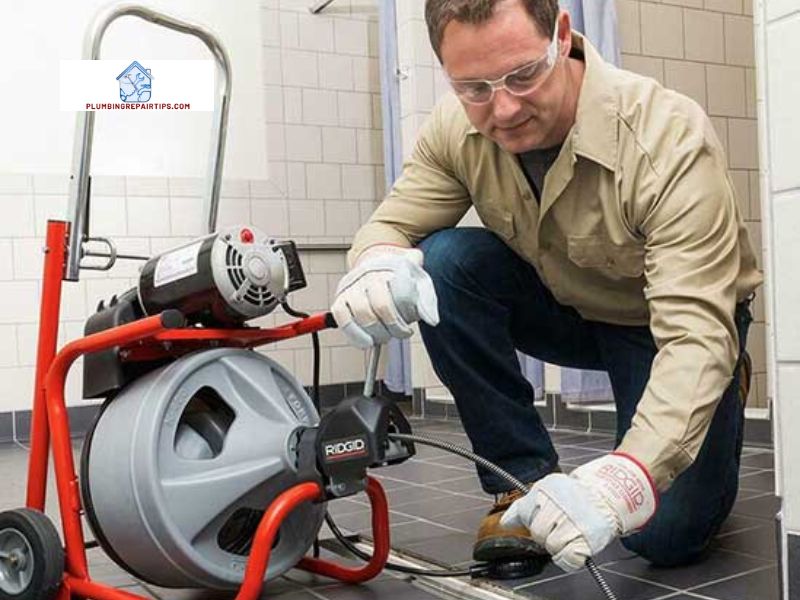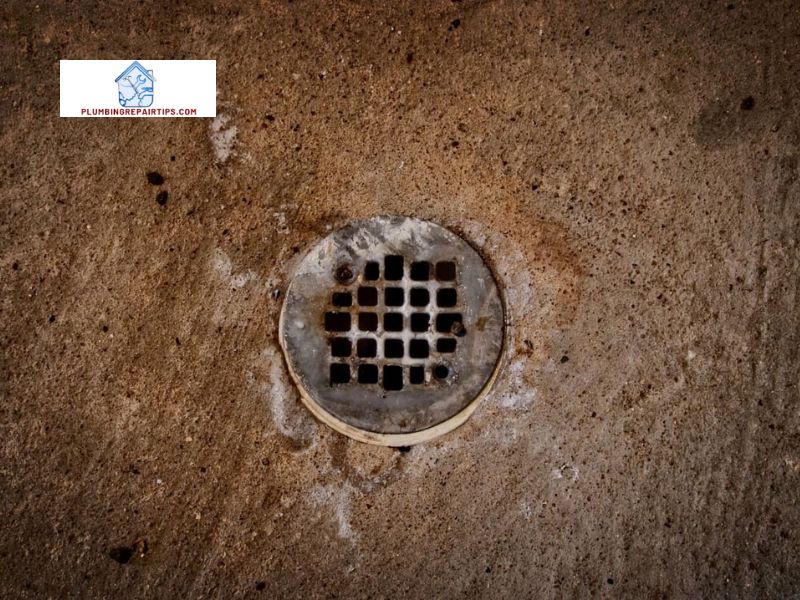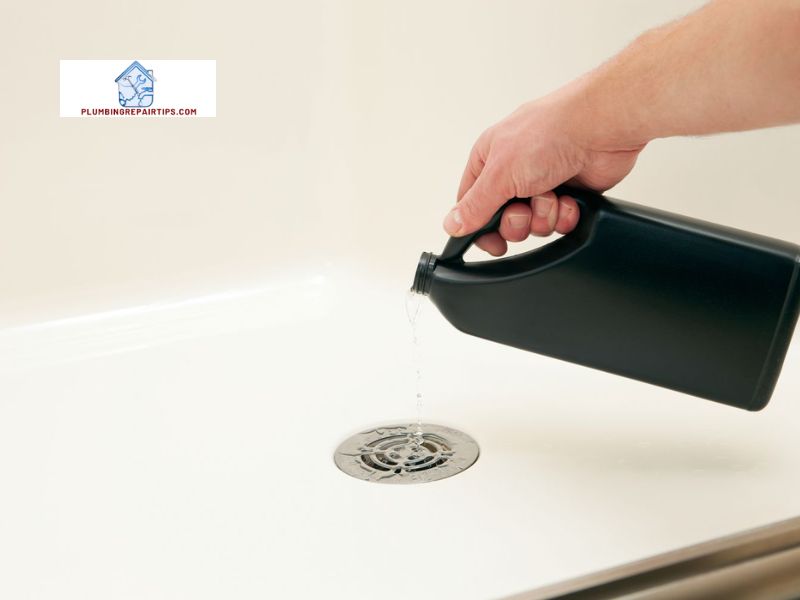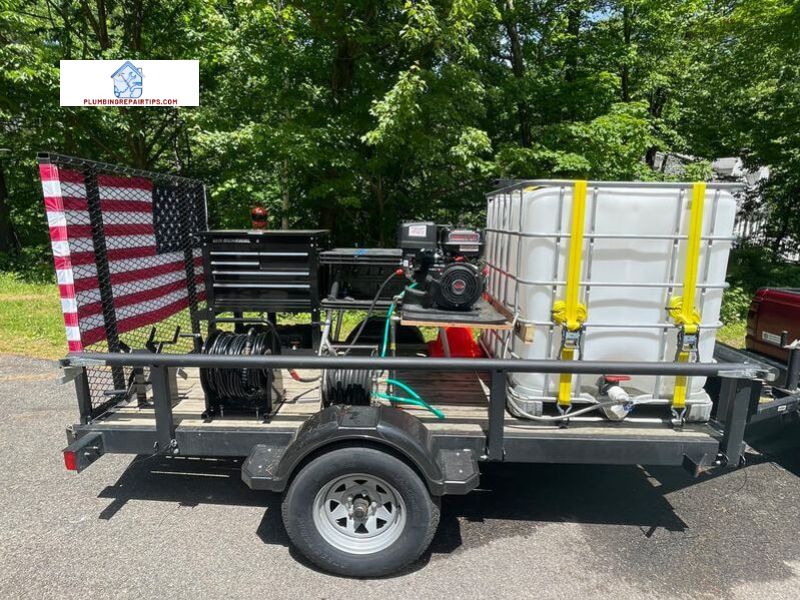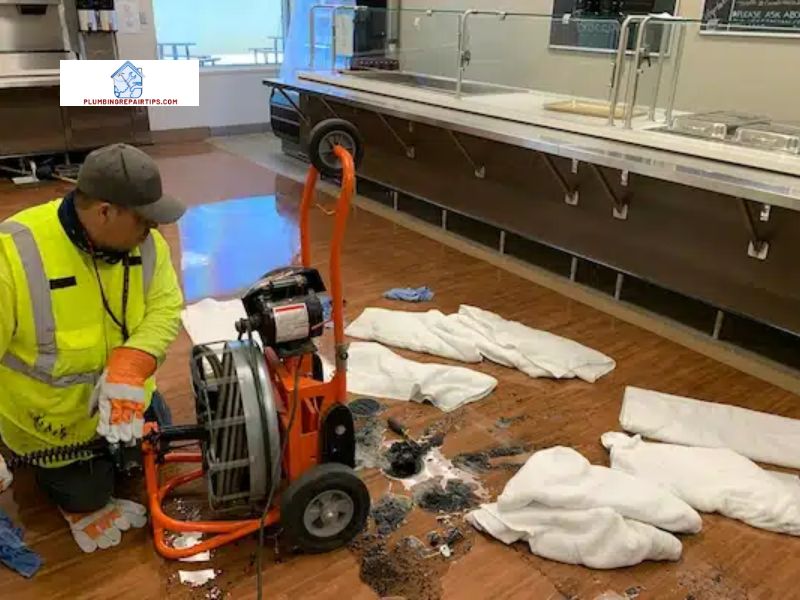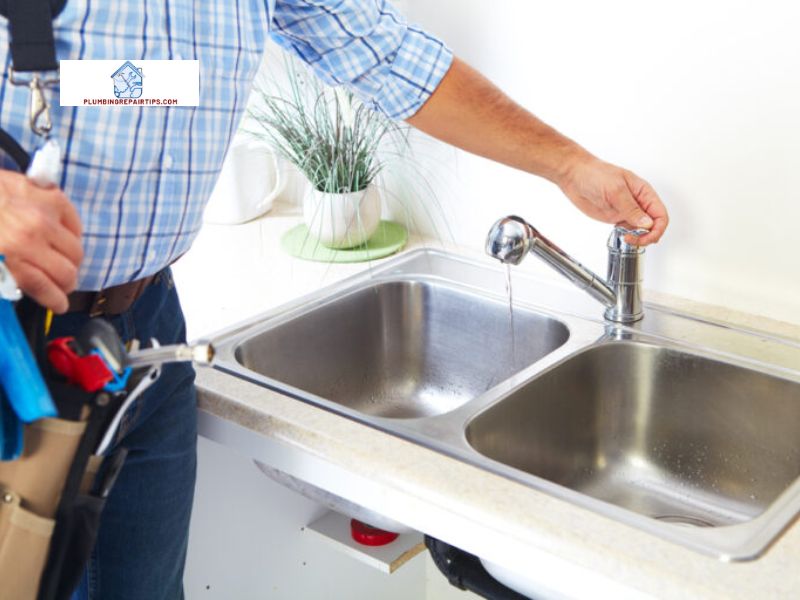Dealing with a clogged drain is an inevitable plumbing issue that every homeowner faces at some point. While there are several drain cleaning solutions and services available, many people prefer to tackle the problem themselves. DIY hydro jet drain cleaning has become a popular and effective method for maintaining clean and clear drains.
In this article, plumbingrepairtips.com provide beginners with a comprehensive guide to DIY hydro jet drain cleaning, including the benefits, safety measures, step-by-step instructions, tips and tricks, and maintenance practices. With the right knowledge and techniques, you can effectively clean your drains at home and save money on professional cleaning services.
Key Takeaways
- DIY hydro jet drain cleaning is an effective method for maintaining clean and clear drains.
- Avoid costly professional cleaning services by cleaning your drains yourself.
- Ensure safety by using the appropriate plumbing tools and following safety guidelines.
- Prevent future clogs by regularly maintaining your drains.
What is DIY Hydro Jet Drain Cleaning?
DIY hydro jet drain cleaning is a plumbing maintenance technique that involves using high-pressure water streams to clear out drain blockages. This process differs from traditional drain cleaning methods, such as using a plunger or drain snake, as it utilizes water pressure cleaning technology to blast through clogs and buildup.
At its core, DIY hydro jet drain cleaning is an effective and eco-friendly way to keep your drains running smoothly while also saving on professional cleaning costs. It is especially useful for homeowners who experience frequent clogs and buildup caused by hair, grease, soap, or food particles. By using high-pressure water jetting, you can effectively remove these blockages and prevent future clogs.
However, it is important to note that DIY hydro jet drain cleaning requires some plumbing know-how and the right equipment to ensure a safe and effective process. Engaging in regular drain maintenance is also essential to avoid costly repairs and damage to your home’s plumbing system.
Safety Measures for DIY Hydro Jet Drain Cleaning
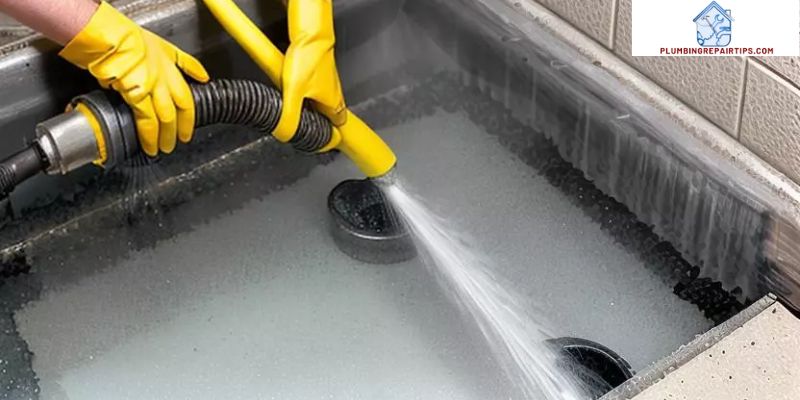
DIY hydro jet drain cleaning can be an effective and cost-efficient way to maintain your drains. However, safety should always be a top priority. Here are some safety measures to keep in mind before attempting hydro jet drain cleaning:
- Protective gear: Always wear protective gear such as safety goggles, gloves, and a face mask to prevent injuries from high-pressure water jets, debris, and chemical cleaners.
- Check water pressure: Make sure to check the water pressure of your DIY hydro jetting equipment before use. If the pressure is too high, it can cause damage to your pipes or injure you or others around you.
- Know your plumbing: Before attempting DIY hydro jet drain cleaning, familiarize yourself with the plumbing system and understand which pipes are safe to clean with high-pressure water jets.
- Use appropriate plumbing tools: Always use the appropriate plumbing tools for DIY hydro jet drain cleaning to avoid damaging your pipes or equipment, including hydro jetting nozzles, sewer camera inspection tools, and drain augers.
- Read manufacturer instructions: Always read and follow the manufacturer’s instructions for your DIY hydro jetting equipment and chemicals to avoid any accidents or injuries.
By following these safety tips and taking necessary precautions, you can ensure a safe and successful DIY hydro jet drain cleaning experience.
Additional DIY Plumbing Tips
In addition to safety measures, here are some additional DIY plumbing tips to keep in mind:
- Regular maintenance: Regularly maintain your plumbing system to prevent clogs and ensure optimal performance.
- Know your limits: Do not attempt complex plumbing repairs or replacements if you are not confident in your abilities. Always call a professional plumber for such tasks.
- Invest in quality plumbing tools: Invest in high-quality plumbing tools that can last for years and make DIY plumbing tasks easier.
- Don’t rush: Take your time and don’t rush through DIY plumbing tasks. Rushing can lead to mistakes and accidents.
- Be mindful of chemicals: Always handle chemicals such as drain cleaners with care and follow the manufacturer’s instructions.
By following these DIY plumbing tips and safety measures, you can successfully maintain your plumbing system and avoid costly repairs.
Step-by-Step Guide to DIY Hydro Jet Drain Cleaning
DIY hydro jet drain cleaning may seem daunting, but with the right equipment and technique, it can be an effective and cost-saving solution for clearing drain blockages. Here we will outline a step-by-step guide to DIY hydro jet drain cleaning.
Step 1: Prepare the Equipment
Before beginning the hydro jetting process, it is important to assemble the necessary equipment. This includes a high-pressure water jetting machine, hydro jetting nozzles, appropriate hoses, and safety gear such as gloves and eye protection.
Step 2: Identify the Blockage
Once you have your equipment ready, you need to identify the location and nature of the blockage. You can use a drain camera or other similar tools to inspect the blockage and determine the best approach for hydro jetting.
Step 3: Perform High-Pressure Water Jetting
Using the hydro jetting nozzle, direct the high-pressure water jet into the blocked drain. Begin at the farthest point from the blockage and gradually work your way towards it. Be sure to use the appropriate nozzle for the type of blockage and adjust the pressure accordingly to avoid damaging the pipes.
Step 4: Remove the Blockage
Continue the high-pressure water jetting until the blockage is removed. This may take several passes, especially for more challenging blockages. Be patient and avoid using excessive pressure that could damage the pipes.
Step 5: Clean Up
Once you have successfully removed the blockage, turn off the water and disconnect the equipment. Thoroughly clean and dry all the equipment and store it in a safe place.
DIY hydro jet drain cleaning can be an effective way to remove drain blockages and maintain optimal drain flow. However, it is important to take appropriate safety measures and use the correct hydro jetting equipment and techniques to avoid causing damage to pipes and fixtures.
Essential Tips and Tricks for DIY Hydro Jet Drain Cleaning
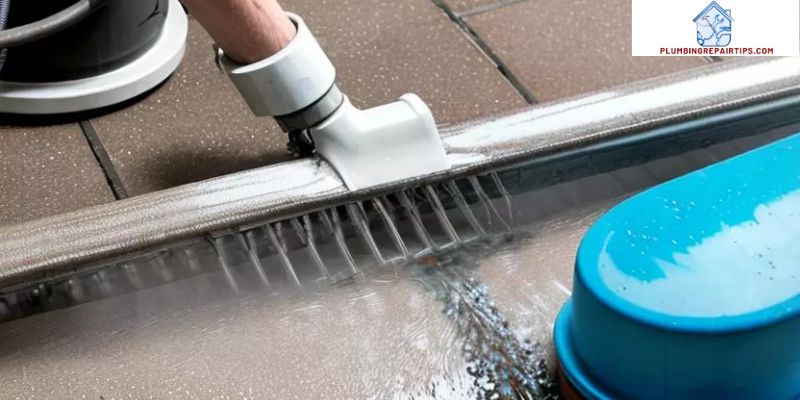
If you’re planning on tackling a clogged drain with DIY hydro jet drain cleaning, there are a few tips and tricks you should know to make the job easier and more effective. Here are some essential ones:
- Identify the Source of the Clog: Before starting, it’s important to know what’s causing the drain blockage. This can help you adjust the water pressure accordingly and use the appropriate hydro jetting nozzle.
- Choose the Right Pipe Cleaning Method: Depending on the type of clog and the pipe material, different pipe cleaning methods might be more effective. For example, mechanical snaking may be more appropriate for tree roots or grease buildup, while hydro jetting may work better for mineral deposits or debris buildup.
- Use the Right Water Jet Drain Cleaner: Choosing the right water jet drain cleaner is crucial to ensuring effective drain unclogging. Look for cleaners that are specifically designed for high-pressure water jetting and safe for use in your type of drain.
- Properly Position the Hydro Jetting Nozzle: To ensure thorough and effective cleaning, make sure the hydro jetting nozzle is positioned properly in the drain. This can help to dislodge the clog and push it out of the way.
- Be Mindful of the Water Pressure: While high water pressure is necessary for effective hydro jet drain cleaning, too much pressure can damage pipes or cause injury. Make sure to adjust the pressure according to the blockage and start with a lower pressure setting first.
- Have the Right Plumbing Tools on Hand: To effectively perform DIY hydro jet drain cleaning, you’ll need the right plumbing tools. This may include a jetter kit, drain camera, and various nozzle attachments. Make sure to have everything you need before getting started.
- Perform Regular Drain Maintenance: To prevent future clogs, it’s important to perform regular drain maintenance. This may include flushing drains with hot water, using natural drain cleaners, and avoiding flushing non-degradable items down the drain.
By following these essential tips and tricks for DIY hydro jet drain cleaning, you can effectively unclog your drains and maintain optimal drain flow.
Preventing Drain Clogs with DIY Hydro Jet Drain Cleaning
Clogs are common plumbing problems that can be a nuisance to deal with. However, with proper preventive measures, you can avoid clogged drains and save yourself from the hassle of drain cleaning in the future. Here are some essential drain cleaning techniques to prevent clogs and maintain optimal drain flow:
Regular Drain Cleaning
To prevent drain clogs, it is essential to clean your drains regularly, especially if you notice any signs of blockages. DIY hydro jet drain cleaning can be a highly effective method to ensure clean drains. Hydro jetting nozzles can remove buildup and debris and help maintain the flow of your drains. Consider performing DIY hydro jet drain cleaning every six months to keep your drains in tip-top shape.
Avoid Pouring Grease Down The Drain
Grease is a common cause of drain clogs. When warm grease is poured down the drain, it may solidify and cause blockages. To prevent this, avoid pouring cooking oil, grease, and other fatty substances down your drain. Instead, dispose of them in a sealed container and dispose of them in the trash.
Use Drain Covers
Drain covers are useful in preventing unwanted debris and particles from entering your drain pipes. You can install drain covers on your bathtub and shower drains, sink drains, and other drain openings to prevent hair, soap, and other particles from entering your pipes.
Inspect Your Sewer Lines
Regular inspections of your sewer lines can help detect any potential problems before they turn into major issues. Inspect your sewer lines regularly to identify any cracks, blockages, or leaks and take appropriate measures to fix these problems promptly.
Consider Sewer Cleanouts
Sewer cleanouts are access points that are installed in the main sewer line of your home. They provide an easy way to access and clean the sewer line, which can prevent backups and clogs. Consider installing a sewer cleanout if your home does not already have one.
By following these drain cleaning techniques, you can prevent clogs and avoid drain cleaning problems. Remember, prevention is key, and regular DIY hydro jet drain cleaning is an effective way to maintain clean drains and prevent future clogs.
DIY Hydro Jet Drain Cleaning Vs. Professional Services
While DIY hydro jet drain cleaning can be an effective solution for maintaining clean drains at home, it’s important to consider when professional services may be more appropriate.
The cost of professional drain cleaning services can vary depending on the location, but it’s generally more expensive than performing DIY hydro jet drain cleaning. However, professional services often come with added benefits such as access to specialized cleaning equipment and experienced plumbers who can quickly identify and fix any plumbing issues.
When opting for DIY hydro jet drain cleaning, it’s important to invest in the appropriate cleaning equipment and jetter kit. If the cost of buying or renting the equipment adds up to a similar amount as paying for professional services, then it may be more cost-effective to hire a professional.
Additionally, DIYers should consider the complexity of the clog or plumbing issue. While hydro jetting can be effective in removing most blockages, it may not be suitable for more severe or hard-to-reach clogs. In such cases, it may be necessary to hire a professional plumbing service that has access to advanced cleaning equipment and techniques.
Overall, while DIY hydro jet drain cleaning can save money in the short term, it’s important to carefully consider the benefits and drawbacks of professional services, particularly for more complex plumbing issues.
Common Mistakes to Avoid in DIY Hydro Jet Drain Cleaning
DIY hydro jet drain cleaning can be an effective and efficient way to remove stubborn clogs and keep your home plumbing system running smoothly. However, it’s important to take the necessary precautions and avoid common mistakes that could lead to further damage or injury.
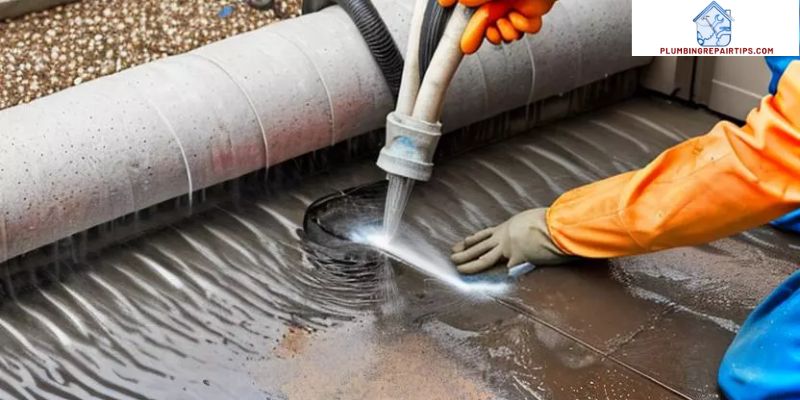
Using Excessive High Pressure
One of the most common mistakes in DIY hydro jet drain cleaning is using too much high pressure. While high-pressure water jetting is great for removing tough clogs, excessive pressure can cause damage to your plumbing system, such as cracking or breaking pipes, resulting in costly repairs. Avoid this mistake by starting with low pressure and gradually increasing as necessary.
Using Inappropriate Tools like Roto Rooters
Another mistake to avoid is using inappropriate tools like roto rooters that can damage your pipes. These tools can scratch and scour the inside of your pipes, leading to further blockages and damage. Instead, use specialized plumbing tools for DIY hydro jet drain cleaning such as hydro jetting nozzles, sewer camera inspections, and drain cleaning machines designed for home use.
Not Wearing Protective Gear
Hydro jetting involves working with high-pressure water, which can be dangerous if not handled carefully. Always wear protective gear, including gloves, goggles and appropriate clothing, to prevent injury from water pressure or debris being dislodged during the cleaning process.
Not Following Safety Guidelines
DIY hydro jet drain cleaning requires strict adherence to safety guidelines. Avoiding safety precautions or disregarding manufacturer instructions can lead to serious injury or damage to your plumbing system. Always read and follow the guidelines provided with your equipment and take the necessary safety precautions, like turning off the water supply and electricity before starting the cleaning process.
By avoiding these common mistakes, you can safely and effectively perform DIY hydro jet drain cleaning, saving you time and money on professional services.
Tips for Maintenance After DIY Hydro Jet Drain Cleaning
Performing regular maintenance on your drains is crucial in preventing future clogs. After performing DIY hydro jet drain cleaning, here are some essential tips on how to maintain your drains:
- Inspect your sewer line: Check your sewer line for any signs of damage or cracks that could potentially lead to future clogs. If you detect any issues, consider calling a professional plumber for assistance.
- Perform regular sewer cleanouts: Sewer cleanouts are important in maintaining optimum drain flow. Be sure to locate your sewer cleanout and perform regular cleanouts to clear any debris or buildup.
- Use drain screens: Drain screens are an excellent tool in preventing debris and other small particles from entering your drains. Consider installing them in your kitchen and bathroom sinks, as well as your shower and bathtub drains.
- Avoid pouring grease down your drains: Pouring grease down your drains can lead to stubborn clogs that are difficult to remove. Instead, collect grease in a container and dispose of it in the trash.
- Regularly clean your drains: Using DIY drain cleaning methods like baking soda and vinegar can help keep your drains fresh and clean. Make sure to follow up with regular hot water flushes to remove any remaining debris.
- Be mindful of what you flush: Only flush toilet paper and human waste down your toilet. Flushing items like feminine hygiene products and baby wipes can lead to major clogs in your sewer line.
By following these simple maintenance tips, you can help prolong the life of your drains and prevent future plumbing issues. Regular maintenance is the key to maintaining optimum drain flow and avoiding costly plumbing repairs.
Your Guide to DIY Hydro Jet Drain Cleaning at Home: Conclusion
In conclusion, DIY hydro jet drain cleaning is a cost-effective and efficient way to maintain optimal drain flow and prevent clogs. By following the safety precautions and step-by-step guidelines provided in this article, you can successfully perform high-pressure water jetting and remove stubborn blockages from your drains.
Remember to use appropriate hydro jetting nozzles and plumbing tools, and avoid common mistakes like excessive high pressure or using roto rooters. Regular maintenance after DIY hydro jet drain cleaning, such as inspecting sewer lines and utilizing sewer cleanouts, can also help prevent future clogs.
Overall, DIY hydro jet drain cleaning is a viable solution for maintaining healthy drains at home. With the right knowledge and techniques, you can achieve effective results and avoid costly professional services. So why wait? Get started today and enjoy free-flowing drains for years to come!
FAQ
Q: What is DIY hydro jet drain cleaning?
A: DIY hydro jet drain cleaning is a method of cleaning clogged drains using high-pressure water jets to remove blockages and debris. It is an effective and cost-efficient way to maintain the drainage system in your home.
Q: Is DIY hydro jet drain cleaning safe?
A: DIY hydro jet drain cleaning can be safe if proper safety measures are followed. It is important to wear protective gear, use the right plumbing tools, and follow the manufacturer’s instructions for operating the hydro jet equipment.
Q: How often should I perform DIY hydro jet drain cleaning?
A: The frequency of DIY hydro jet drain cleaning depends on the usage and condition of your drains. It is recommended to perform this cleaning technique at least once a year or whenever you notice slow drainage or recurring clogs.
Q: Can I use DIY hydro jet drain cleaning on all types of drains?
A: DIY hydro jet drain cleaning can be used on most types of drains, including kitchen sinks, bathroom drains, and outdoor drains. However, it is important to check with a professional or the manufacturer’s guidelines to ensure compatibility with your specific drain system.
Q: How effective is DIY hydro jet drain cleaning compared to professional services?
A: DIY hydro jet drain cleaning can be effective in removing most common drain blockages and maintaining drain flow. However, for more severe or complex issues, professional drain cleaning services may be required to ensure a thorough and long-lasting solution.
Q: What are some common mistakes to avoid in DIY hydro jet drain cleaning?
A: Some common mistakes to avoid in DIY hydro jet drain cleaning include using excessive water pressure, using inappropriate tools or equipment, and neglecting proper safety precautions. It is important to follow the recommended guidelines and consult with professionals if needed.
